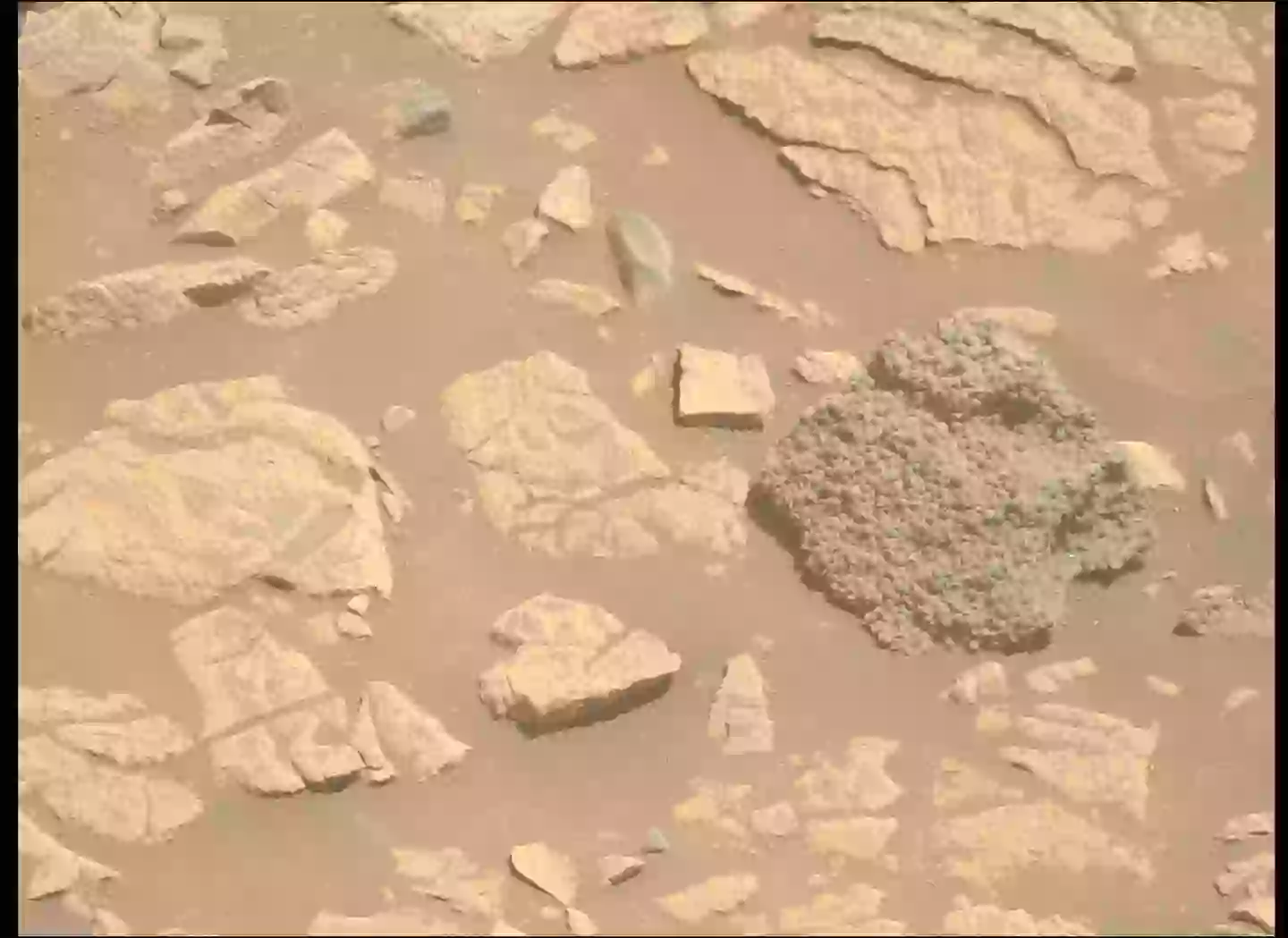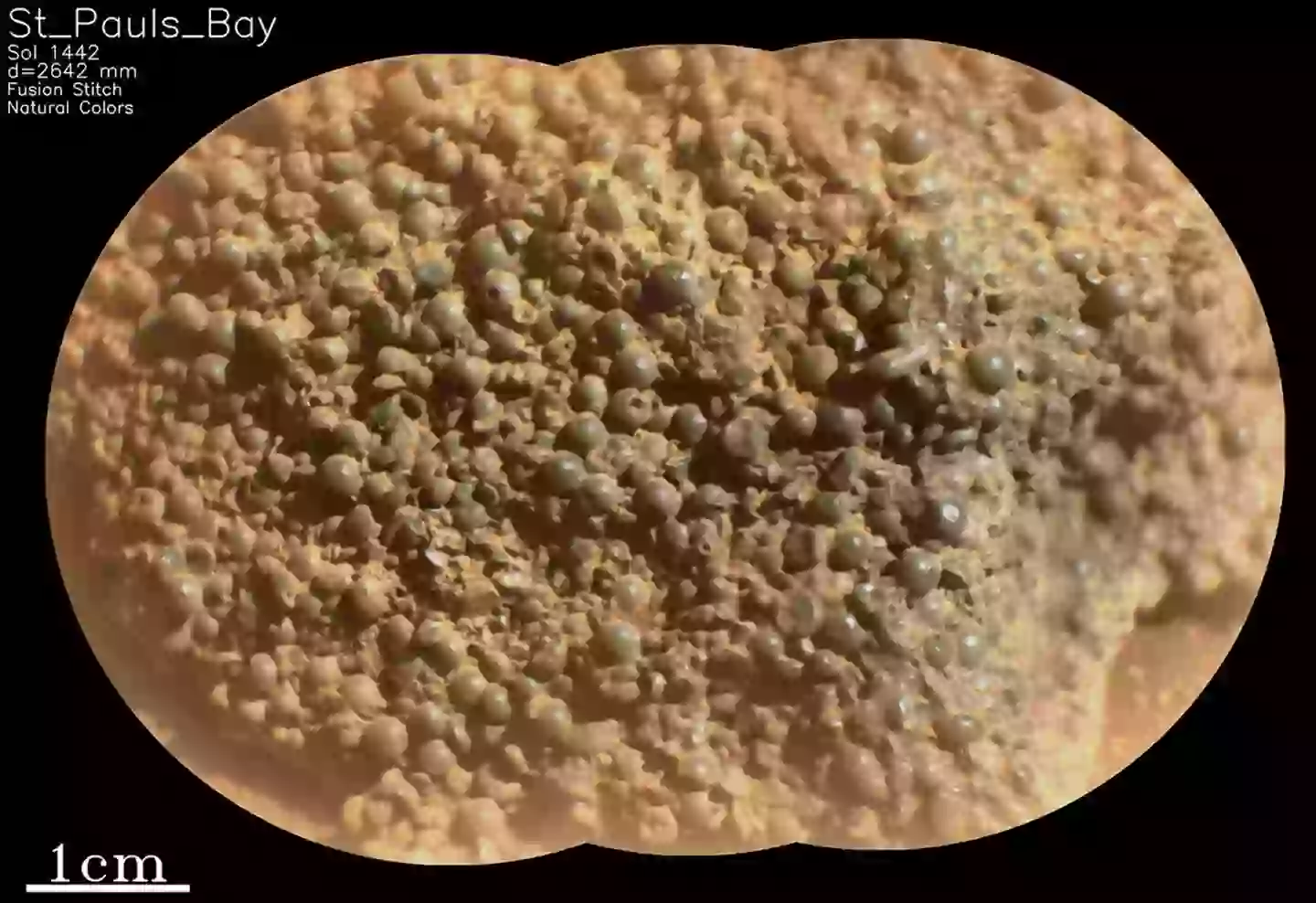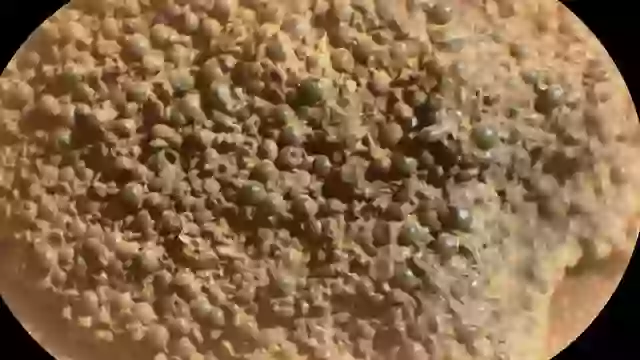A surprising rock find on Mars has caught the attention of NASA scientists, who are still working to “understand its origin.”
On March 23, NASA announced that its Perseverance rover made an unusual discovery while exploring the lower Witch Hazel Hill area of the Jezero crater rim on Mars.
The rover came across a “strange rock” made up of hundreds of millimeter-sized spheres, according to a statement on NASA’s website.
The Perseverance Science Team has since called the rock ‘St Paul’s Bay’ and is still analyzing the find.
The release describes the rock as being made up of hundreds of millimeter-sized, dark gray spheres, with some taking on more elongated, elliptical forms, while others had angular edges, possibly indicating broken spherule fragments. It raised the intriguing question: “What geological process could create these unusual shapes, including spheres with tiny pinholes?”
And that’s not all, either. The rock is not just composed of hundreds of spheres but also a ‘float rock’.

NASA’s Perseverance made the discovery (NASA/JPL-Caltech/ASU)
A ‘float rock’ is a ‘term used by geologists to describe something that is not in-place’.
NASA’s team are now trying to figure out where the rock fits in the wider picture of Witch Hazel Hill on Mars.
“Initial observations have offered intriguing hints that these formations might be connected to one of the dark-toned layers identified by the team from orbit,” the release states. However, the team is still working diligently to find a more definitive explanation.
It goes on to explain, “Understanding the geological context of these features will be essential for uncovering their origin and determining their significance in the geological history of the Jezero crater rim and beyond!”
This isn’t the first time Mars has left NASA teams puzzled by the discovery of ‘strange spheres.’

NASA has nicknamed the rock ‘St Paul’s Bay’ (NASA/JPL-Caltech/LANL/CNES/IRAP.)
In July 2024, NASA’s Perseverance rover uncovered a rock dubbed “Cheyava Falls” – an arrowhead-shaped formation measuring 3.2 feet by two feet wide. It exhibited features, particularly colored spots, that are often associated with signs of ancient life.
The discoloration on the rock, coupled with its shape and location, suggested a possible history of water passing through it.
Earlier this year, in February, Perseverance also unearthed a “one-of-a-kind treasure” at Blue Hill.
The rocks at Blue Hill are of ‘immense scientific interest’ due to being ‘rich in low-calcium pyroxene (LCP)’.
“This marks our first Noachian-aged outcrop sample, an important milestone in our mission to uncover the geological history of Jezero Crater,” NASA explained at the time.



